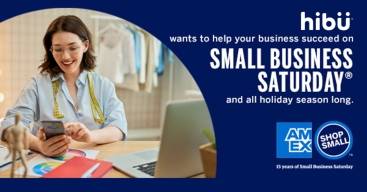Millions of Americans use Facebook every day – every day! And you’ll be surprised to find out how much of your customers’ time is now spent there. So if Facebook isn’t part of your digital marketing – it’s time – and here’s how…
We’re pleased to share the Small Business Guide to Facebook Marketing. This guide gives you a roadmap to help you execute an effective Facebook marketing campaign.
Your free guide includes all this and more…
- Why social matters
- How to reach and engage customers on Facebook
- Different types of Facebook ads
- Selecting the right audience
- Maximizing the results of your Facebook campaign
The Small Business Guide to Facebook Marketing
Get your guide to go now, or read the content below.
Why Social Media Matters for Local Businesses
Over the last decade, social media has become omnipresent. Facebook, in particular, has emerged as a vital marketing channel for small businesses.
Facebook offers small businesses a conversational, relationship-focused platform to target, reach and engage with real people over time and throughout the customer lifecycle.
The majority of online adults use social media. They skew somewhat younger, more urban and suburban, better educated and more affluent – but rapid growth has been seen across all demographic groups. For example, over 45% of seniors (65+) and well over 66% of rural consumers are social media users.
On Facebook, the largest social media platform, a local Page is visited by over 70% of users at least once a week. Facebook offers a large and highly engaged audience, a diverse set of ad formats and advanced marketing capabilities to drive measurable business results.
Establishing a Presence on Facebook
It all starts with a professional, active Facebook Page.
A Facebook Page is the hub for all marketing and customer activities on the platform.
An effective Facebook Page should include:
- Accurate, up-to-date business information
- High-quality photographs
- Regularly updated content
- Timely interaction with your engaged audience
What to include on your Facebook Page
- Consistent business information – The branding, company information, and contact information published on Facebook, on a business’ website and on the major local directories must match. This information includes: name, address, phone number and hours of operation (as applicable).
- High-quality images – A business’ profile and cover photo are usually the first things people see when they visit their page. They should work together to provide a good first impression. By following Facebook’s sizing and resolution guidelines, businesses can be sure that their images will look great across all devices.
- A list of Ratings and Reviews – Local businesses should set up a Reviews tab on their Facebook Page. Reviews have a massive influence on customer purchase decisions. Positive reviews should be requested, shared, posted and featured in ads.
- Tools that save time and enable self-service – Customers appreciate companies that value their time. Facebook Pages should therefore include several ways for visitors to quickly contact your business, including buttons such as “Call Now” or “Send Message.” Where appropriate, Facebook Pages should also include tools that make it easy for customers to transact, such as making reservations or appointments or e-commerce.
Reaching and engaging customers
The next part of the marketing process is to build a program that reaches and engages customers with content and advertising.
Reaching existing customers
Start collecting Fans on Facebook by inviting your existing customers to like your Facebook Page. Using the Facebook Custom Audiences tool, a business should upload and import a list of the email addresses of their existing customers to the platform. The tool matches this customer list to Facebook users and sends them notifications or suggestions to become Fans by Liking the Page. A business’ customer list should be updated on an ongoing basis, as it will provide the business an unparalleled range of insights and the basis for campaigns targeting existing customers as well as new customers who “look like” existing customers.
“Using the Facebook Custom Audiences tool, a business should upload an import a list of the email addresses of their existing customers to the platform”
Engaging customers with content
Consumers have a much more favorable view and willingness to interact with business Pages that include a fresh stream of updated content and comments than with business Pages that do not.
A study of the top 20 brands with the most loyal Facebook followers found that these companies frequently post content that matters to their audience – content that:
- Is consistent with and expected from the brand
- Appeals to customers’ interests and lifestyle
- Engages them in “shareable” activities
Reaching customers with ads
Facebook has developed a powerful ad targeting platform with multiple ad formats. While Facebook ads look different depending on the ad type and the device they’re seen on, they each include elements designed to engage consumers.
- Social Information — When available, people will see if their friends have engaged with your business.
- Business Name — The name of your business always shows prominently.
- Text — Grab interest with more info about what you’re advertising.
- Images and Videos — Compelling images and videos encourage your target audiences to engage.
- Call to Action (optional) — A customizable button encourages people to click.
Choosing an ad campaign type
Ask yourself: What am I trying to achieve? What will bring my business value? For some businesses, the answer is “new customers.” For others, it’s “get my business, products or services seen.” Whatever your goals, there are three ad campaign options that work for most businesses:
- Local Awareness campaign — designed for customers who want to do business with you right now By customizing your call to action — Call Now, Get Directions, Learn More or even Send a Message — you are providing relevant local context to connect people online who will do business with you offline. You are driving those who click on your ad deeper “into the sales funnel” from awareness to engagement with your business.
- Website Clicks campaign — designed to drive prospects to a specific page of your website Ads will drive to a “conversion event page” on your site where prospects can read about products or services…see a current offer or coupon…make an appointment…or any other number of actions.
- Lead campaign — designed to capture prospect information for products or services with a lengthy sales cycle
Offering a discount or other promotion in exchange for contact information — names, phone numbers, email addresses and more — can be an effective way to build a list of leads. It is recommended that you focus on collecting basic information about the prospect (to increase the likelihood that forms are completed).
Selecting the right audience
Facebook’s marketing appeal is its audience reach and targeting abilities. Facebook has demographic data from every single user profile: age, location, gender, school attended, marital status, etc. It has data about behaviors and interests: posts liked, videos viewed, Pages liked and so on.
Brands and large marketers use this data to target the precise audiences they want. They also use it to find “lookalike” audiences across the country. All that data and targeting can also be used by small businesses to build a “lookalike audience” from prospects who are responding to your ad. You essentially “clone” the people who like your business to find more of them to market to.
There are a number of ways to do this, but the easiest is to “pixel” your website – add code to your site to track the people who visit. Facebook refers to this process as building a “custom audience” because it’s unique to your business.
Facebook will look at the common qualities of the people in your source audience (e.g. demographics and interests), find more people that “look like” them and show them your ads.
Facebook will look at the common qualities of the people in your source audience (e.g. demographics and interests), find more people that “look like” them and show them your ads.
Communicating with your customers
While a professional presence and a targeted ad strategy are essential to a successful Facebook marketing campaign, a well-managed communication strategy is the key to customer loyalty. A recent study found that 76% of social media marketers say their company already offers customer service on social.
Whether responding to a comment in a post or answering a message directly, an open and personal line of communication with customers will help drive business and build a long-term relationship. In fact, from 2020 to 2021, the volume of consumers who preferred using social messaging for customer service increased by 110%. To execute an effective communication strategy, you must seek, monitor, and respond to customer inquiries in a professional and timely manner.
Here are six best practices:
- Monitor and Respond to All Feedback — It is essential to monitor and respond to all customer reviews, posts, comments and messages. It provides a sense of prompt, attentive customer service.
- Respond in a Timely Manner — When possible, know in advance when you will be available for communication with your audience. Within Facebook Messenger, you can turn on Messaging when you are ready and able to respond quickly. If you respond to 90% of your messages within 15 minutes, you can receive the “very responsive to messages” badge from Facebook. To help set customer expectations, Facebook allows you to display typical response time: “typically replies in minutes”; “typically replies within an hour”; typically replies within hours”; etc.
- Respond with a Professional, Conversational Tone — The voice used to communicate with your audience is important. Businesses should aim to strike the right balance between professional and personal. Communication should be written in the same way you might speak to someone in person. You want your message to come across as respectful and friendly. Be helpful, to the point and clear about the inquiry to which you are responding. To further personalize your message, always sign your name (and not just the name of the business).
- Share Offers with Existing Customers — When coordinated with email and advertising, Facebook Messenger can be used as a part of a strategy to share offers designed to turn existing customers into repeat customers.
- Seek Feedback from Customers — It's important to solicit feedback from customers whenever possible by embedding a link to the Business’ Ratings and Reviews page in a Facebook message.
- Respond to All Negative Feedback...Discreetly — If users post a negative review or adverse comment on your Facebook business Page, respond publicly with a brief message acknowledging the issue and follow up with a private message to resolve the issue so that the author does not cause future problems. Ultimately, the business can remove spam or comments from “trolls” from the Facebook Page, but removing valid negative comments from real customers should be a last resort. A mixture of positive and negative comments gives a Page authenticity. Ideally, the customer’s issue can be resolved and the customer can remove the negative comment (or reply to highlight a positive resolution).
Your Facebook Marketing Checklist
Doing business effectively on Facebook is a multi-step process, requiring a unique mindset and an understanding of the platform’s targeting parameters, which will allow you to cultivate loyal customers.
To maximize the results of your Facebook Marketing campaign:
- Import your offline customer list to the Facebook Platform in order to identify and invite fans to like your page — this provides the foundation for your marketing efforts
- Develop, post and promote compelling and relevant content that will be useful to your customers — post on an ongoing basis to keep customers and prospects coming back, and to keep you top of mind
- Choose an ad campaign type that aligns with your business objectives
- Seek and monitor feedback from your customers and respond to it in a conversational and timely manner — your customers will expect this, and they will go elsewhere if you don’t deliver
- Reach out to existing customers via email, Facebook Ads and Messenger to continuously re-engage your base — this helps to accomplish the goal of cultivating an ongoing relationship with customers



